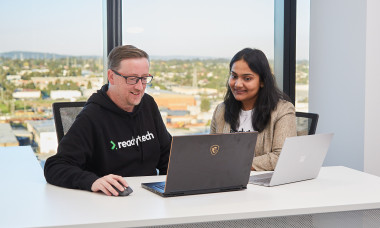The untapped advantage: why a multigenerational workforce is essential for growth
As Australia faces a growing skills shortage, we’re overlooking a powerful, underutilised asset - experienced workers approaching traditional retirement age. Far from slowing down, many are eager to continue working, whether for financial security, social connection, or a sense of purpose. Despite their experience, these individuals are too often left out of the conversation. So why are we leaving this talent on the sidelines?
Ageism in the workplace
Despite rising life expectancies and retirement ages within the Australian population, one of the key areas of discrimination that is often missing from inclusion discussions and policies is ageism. Only 8 percent of businesses include age in their DEI policy, yet over half (67 percent) of jobseekers in Australia believe they have been discriminated against because of their age when applying for roles. Age-related stereotypes often shape workplace culture in subtle, unconscious ways. This can be seen particularly during recruitment, promotion decisions, and day-to-day interactions. Tackling this undercurrent of passive discrimination is essential to building truly inclusive workplaces.
Benefits of age-inclusivity in the workforce
Building multigenerational teams isn’t just the right thing to do, it’s a smart business move. Here’s what companies stand to gain:
- Transferral of knowledge
Cross-generational collaboration strengthens skills, encourages learning and nurtures a culture of empathy and communication.
- Financial growth
Age-diverse teams consistently outperform homogenous ones, boosting innovation, productivity and profitability.
- Greater workforce stability
Employees later in life tend to stay longer, offering continuity and reducing turnover.
- Innovation through perspective
Different generations bring unique lenses to problem-solving, driving creativity and new ideas.
- Filling the skills gap
Engaging older workers helps close skills shortages and maintain institutional knowledge.
Cost of ageism on businesses
So, what’s the real cost of ageism to your business? Ageism has real financial consequences. It affects profitability, hampers performance, and erodes both productivity and employee loyalty. The loss of talent is also significant, especially during recruitment where older candidates are often dismissed due to their age.
Age discrimination isn’t just unethical, it’s expensive. Businesses that overlook older workers risk losing decades of experience, loyalty, and insight. Imagine losing an older employee overnight, simply because there wasn’t a pathway for them to shift into a mentorship or advisory role. That’s not just a loss for the individual; it’s a loss for the entire organisation.
How do we build an age-inclusive workforce?
Cultivating an age-inclusive workforce takes more than just good intentions, it requires conscious effort and strategic action. Here are some ways to start:
1. Lead with an inclusive culture
Start by embedding respect and empathy into everyday interactions throughout your business. From onboarding to leadership training, age-inclusivity must be intentional. The key to this is effective communication; by encouraging openness and support as well as the provision of resources to achieve this, teams can communicate effectively across generations. This then helps to cultivate a workforce that celebrates the strengths inherent in each generation rather than reinforcing age stereotypes.
2. Flexible work models
A one-size-fits-all approach doesn’t work. Employees later in life may wish for flexible working hours, part time work or even phased retirement options that better support their lifestyle and wellbeing. The provision of this empowers older workers to stay engaged with the business and more likely to want to work for longer.
3. Intergenerational programs
Clear structured mentorship programs, where knowledge flows in both directions, can be invaluable. These initiatives help transfer skills, bridge generational gaps, and foster mutual respect.
4. Training
Provide age-inclusive training that fosters awareness, empathy, and practical strategies and set the expectation that inclusion is everyone’s responsibility.
Pfizer Example
Pfizer has taken bold steps to build a truly age-inclusive workplace. Through “returnships,” they invite experienced professionals, often those who’ve stepped away from the workforce, to rejoin with support. Their generational exchange programs go a step further, creating regular spaces where employees of different ages come together to share insights, challenge assumptions, and learn from one another. By combining re-entry pathways with intentional cross-generational dialogue, Pfizer is not just tackling ageism, they’re turning age diversity into a strategic advantage.
What next?
Consider the possibilities of a workforce where wisdom meets innovation, where decades of experience fuel fresh thinking and new ideas. As inclusive businesses, we should be celebrating diversity and not perpetuating stereotypes. What if your most valuable future hire already left the workforce?
For more information on ageism, see our webinar with industry expert Richard Spencer, director of AgeInc, to hear his insights into the implications of age-discrimination on the workforce. Visit here.






